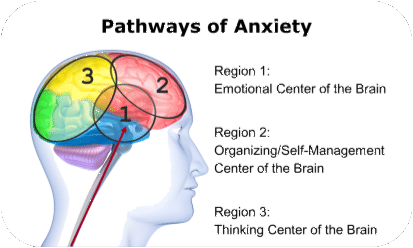As technology continues to advance at an unprecedented rate, the prevalence of anxiety disorders in the modern world has also been on the rise. According to the World Health Organization, anxiety disorders are the most common mental disorders worldwide, affecting an estimated 18.1% of adults in the United States alone. But what exactly causes anxiety disorders, and how can technology play a role in both exacerbating and alleviating these conditions?
The Neurobiology of Anxiety
Anxiety disorders are complex conditions that involve a combination of genetic, environmental, and neurological factors. In the brain, anxiety is regulated by a network of structures known as the limbic system, which includes the amygdala, hippocampus, and prefrontal cortex. These structures work together to process and respond to threats in the environment, triggering the body’s “fight or flight” response when necessary.
In individuals with anxiety disorders, this threat-detection system can become overactive, leading to a heightened sense of fear and worry even in non-threatening situations. Studies have shown that people with anxiety disorders often have an imbalance of neurotransmitters such as serotonin, dopamine, and gamma-aminobutyric acid (GABA), which play a key role in regulating mood and emotions.
Technology and Anxiety
While technology has undoubtedly revolutionized the way we live, work, and communicate, it has also brought about new challenges when it comes to managing anxiety. The constant barrage of notifications, emails, and social media updates can overwhelm the brain’s processing capacity, leading to heightened stress levels and feelings of anxiety. Additionally, the pressure to constantly stay connected and productive can contribute to a sense of burnout and mental exhaustion.
On the other hand, technology also offers a range of tools and resources that can help individuals manage their anxiety more effectively. Mindfulness apps, virtual reality therapy, and online support groups are just a few examples of how technology can be used to promote relaxation, stress reduction, and emotional well-being. By harnessing the power of technology in a mindful and intentional way, individuals can develop healthier coping strategies and build resilience against anxiety disorders.
The Future of Anxiety Treatment
As our understanding of the neurobiology of anxiety disorders continues to evolve, so too does the potential for new and innovative treatments. Advances in neuroscience, genetics, and artificial intelligence have opened up exciting possibilities for personalized and targeted therapies that could revolutionize the field of mental health.
One promising area of research is the use of neurofeedback, a technique that allows individuals to regulate their brain activity in real-time through visual or auditory feedback. By training the brain to activate specific neural pathways associated with relaxation and calmness, neurofeedback has shown promise in treating a range of anxiety disorders, including generalized anxiety disorder, social anxiety disorder, and panic disorder.
Another emerging technology is transcranial magnetic stimulation (TMS), a non-invasive procedure that uses magnetic fields to stimulate nerve cells in the brain. TMS has been approved by the FDA for the treatment of depression and is currently being studied as a potential treatment for anxiety disorders as well.
Conclusion
While anxiety disorders can be debilitating and challenging to manage, the field of mental health is rapidly evolving, thanks in part to advances in technology. By understanding the neurobiology of anxiety, harnessing the power of technology in a mindful way, and exploring innovative treatments, individuals with anxiety disorders can find hope and healing in a world that is constantly changing.
Remember, if you or someone you know is struggling with anxiety, it is important to seek help from a qualified mental health professional. Together, we can work towards a future where anxiety disorders are better understood, easily treated, and no longer stigmatized.

